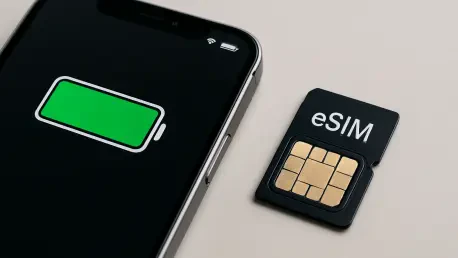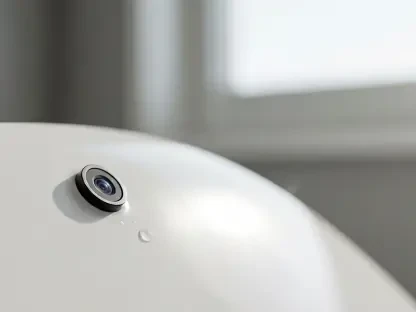Today, we’re thrilled to sit down with Oscar Vail, a renowned technology expert with a deep passion for cutting-edge innovations in quantum computing, robotics, and open-source projects. With years of experience analyzing the latest trends in the tech industry, Oscar is the perfect person to guide us through the nuances of Apple’s latest release—the eSIM-only iPhone 17 Pro—and its impressive battery performance. In this conversation, we dive into the design choices behind the larger battery in eSIM models, the regional rollout of this feature, and the real-world implications of recent battery life tests. Let’s explore how these changes impact users and what they reveal about the future of smartphone technology.
How does the iPhone 17 Pro stand out from other models in its series when it comes to battery capacity, and what drove Apple to make this change?
The iPhone 17 Pro, specifically the eSIM-only version, is unique because it packs a larger battery compared to the models with a physical Nano SIM tray. Apple made this possible by repurposing the space that would’ve been taken up by the SIM tray, allowing for a battery with a 6.35% larger capacity—4,252mAh versus 3,998mAh in the Nano SIM variant. The decision to go bigger on battery size in eSIM models seems to be a strategic move to push the benefits of eSIM technology while addressing consumer demand for longer battery life, especially in markets where eSIM adoption is already strong.
Why did Apple limit the eSIM-only iPhone 17 Pro with the larger battery to specific regions, and which countries are included in this rollout?
Apple rolled out the eSIM-only iPhone 17 Pro with the enhanced battery in select regions like the U.S., Canada, Japan, Mexico, and parts of the Middle East, including Bahrain, Kuwait, Oman, Qatar, Saudi Arabia, and the UAE, along with Guam and the U.S. Virgin Islands. I think the choice of these markets comes down to infrastructure and consumer readiness. These regions generally have better carrier support for eSIM technology and a customer base that’s more open to ditching physical SIM cards. It’s likely a test run to gauge feedback before a broader rollout.
Can you walk us through how you conducted the battery life tests for the eSIM iPhone 17 Pro and what activities were included in the evaluation?
For the battery tests on the eSIM iPhone 17 Pro, we followed a standardized methodology to ensure consistency. We tested key activities that reflect typical smartphone use—making calls, browsing the web, streaming video, and gaming. Each test was run under controlled conditions to measure endurance in hours and minutes, giving us a clear picture of how the larger battery performs across different scenarios. The goal was to simulate a mix of workloads that most users encounter daily, though real-world results can vary based on individual habits and settings.
With a 5.3% improvement in the Active Use Score for the eSIM model, what does this translate to for everyday users?
The 5.3% boost in the Active Use Score, which came out to 16:12 hours for the eSIM iPhone 17 Pro compared to 15:23 hours for the Nano SIM version, means users get roughly 49 extra minutes of mixed usage. This improvement shines brightest in web browsing, where we saw over an hour of additional runtime—13:41 hours—and in gaming, with an extra 44 minutes at 10:58 hours. Even call time improved by about 47 minutes to 24:01 hours. For the average user, this could mean less worry about charging during a busy day, especially if you’re heavy on browsing or gaming.
Apple claimed the eSIM models would offer 2 extra hours of video playback, but your tests didn’t reflect that. What might explain this discrepancy?
That’s right, Apple advertised 2 additional hours of video playback for the eSIM models, but our tests showed almost no difference—22:40 hours for the eSIM version versus 22:47 for the Nano SIM model. We repeated the test multiple times to confirm, but the results stayed consistent. I suspect the gap comes down to differences in testing conditions. Apple might use specific settings or content types that optimize playback efficiency, whereas our tests aim for a broader, more standardized approach. Factors like screen brightness or network conditions could also play a role in why we didn’t see the promised boost.
Why do you think web browsing showed such a significant improvement of over an hour with the larger battery in the eSIM model compared to other activities?
The web browsing test result of 13:41 hours—over an hour more than the Nano SIM version—was a standout. I believe this area benefited so much because browsing tends to be less power-intensive than, say, video streaming or gaming, which heavily tax the GPU and display. The larger battery in the eSIM model can stretch further during lighter tasks like scrolling through websites or reading articles. It suggests that the extra capacity is most impactful for sustained, moderate usage rather than high-demand activities, where other hardware bottlenecks might limit the gains.
Looking ahead, what is your forecast for the future of eSIM technology and battery capacity in smartphones?
I’m optimistic about where eSIM technology is headed. As more carriers and regions adopt eSIM, I expect Apple and other manufacturers to phase out physical SIM trays entirely within the next few years, freeing up space for larger batteries or other components across all models, not just select markets. On the battery front, we might see innovations like silicon-carbon technology to boost capacity and charging speeds, though there’s no clear sign of that in the immediate future for iPhones. The trend will likely be a balance of bigger batteries and smarter power management to meet the growing demands of 5G, AR, and other power-hungry features. I think we’re on the cusp of a major shift toward more efficient and versatile devices globally.









